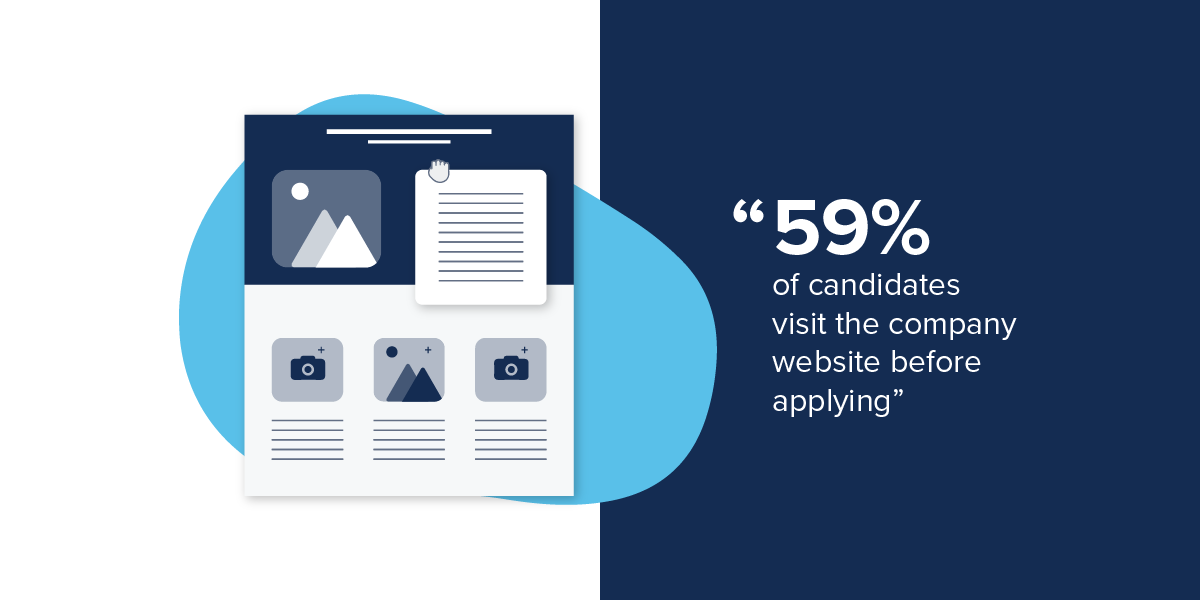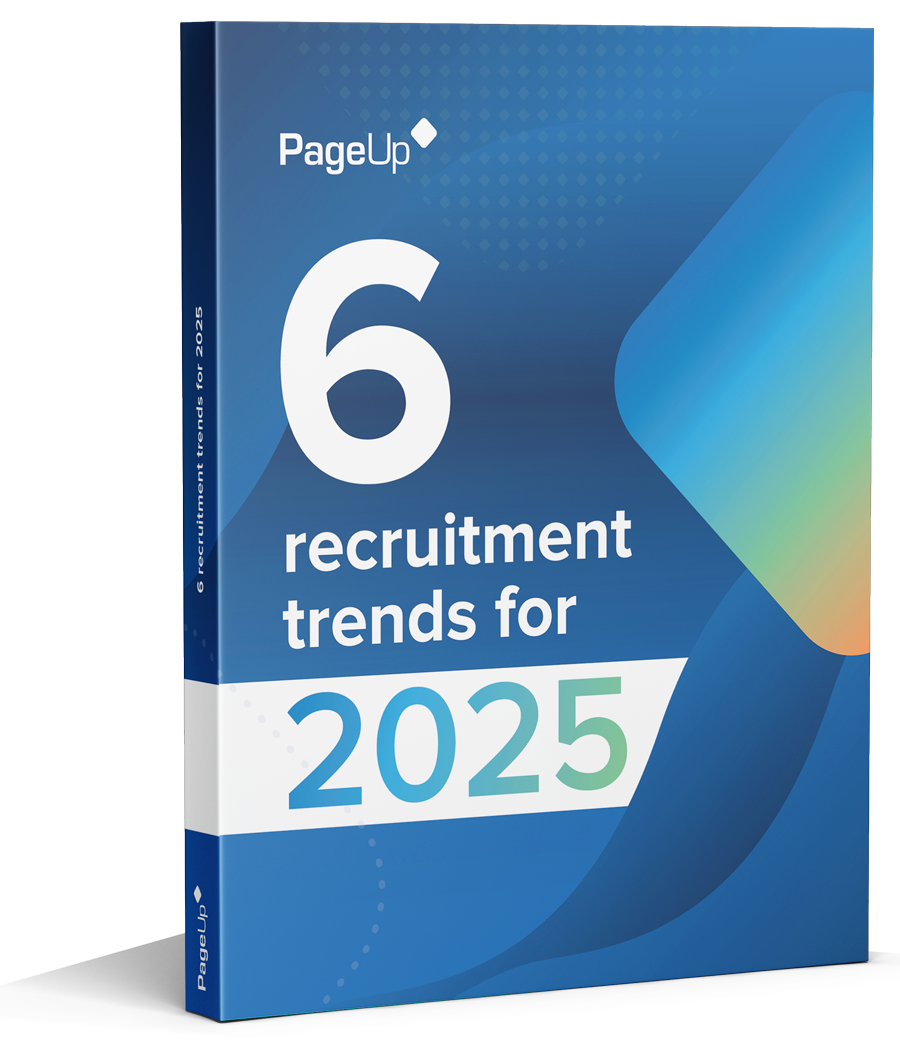Gone are the days of posting a job description on a job board and hoping the perfect candidate hits ‘apply’. To land great hires in today’s competitive job market, talent acquisition teams must adapt and build a steady pipeline of candidates ready for when a role arises. But piquing the interest of top talent is almost impossible without the appeal of a great company careers website (or careers site).career website (or career site).
Why are careers websitescareer websites so important?
According to LinkedIn data, 59% of candidates visit the company website before applying to find out more about an organisationorganization and what it’s like to work there.
Building interest in job opportunities begins and ends with a company’s careers or job description pages. This is where organisationsorganizations communicate what they do and how candidates connect to organisationsorganizations and their people. Here, recruiters, hiring managers, and their employees can tell an authentic story about their culture and attract quality applicants to jobs: these pages are where jobs and employer brands come to life.
Here’s how modern careers websitescareer websites can help employers ensure their online presence, including all digital recruitment experiences and touchpoints, meets candidate expectations:
Careers websitesCareer websites work proactively for recruiters
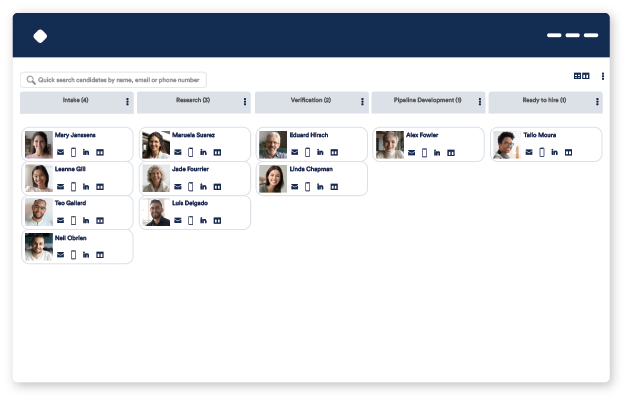
While reactive hiring approaches may be useful for short-term goals, proactive hiring helps recruiters pipeline candidates and nurture them in pools to keep them warm. In other words, talent acquisition teams need to proactively build long-term professional relationships with passive talent ready for future opportunities.
But pipeline and pool-building might sound like a tall order for busy hiring teams. Our research found that only 43% of organisationsorganizations have well-established talent pipelines and pools equipped to meet their company’s future hiring needs. Careers sites are a constant touchpoint for all jobseekers, and a good careers site will lure passive candidates into a recruiter’s net without any manual effort.
CMS tools
How? When content management system (CMS) tools and recruitment marketing are combined, careers sites become incredibly powerful. The CMS allows companies to build and easily edit job boards and showcase their employee value proposition (EVP) and employer brand with dedicated landing pages.
In addition to this, modern recruitment marketing tools automate a company’s advertising activities at-scale, like sharing job postings across the most effective hiring channels.
They support an excellent candidate experience
Even despite the recent COVID-19 layoffs and furloughs, many employers still find themselves struggling to attract and retain great people. Talent Board’s latest CandE Recruiting Focus report found that 85% of employers cited improving the candidate experience as a top priority for their organisationsorganizations in 2020.
Candidates are no longer at the mercy of employers picking and choosing who best fits their needs. The power balance has shifted, and employers need to provide a great candidate experience if they want to hire top talent.
Promoting an open role in 2021 requires more effort than a job board post. It requires companies to create beautiful careers sites that offer memorable candidate experiences and considers the unique needs of the talent they seek.
Many organisationsorganizations are now focused on ensuring each applicant (successful or otherwise) has a positive candidate experience. With compelling messaging, personalisationpersonalization, and user-friendly navigation, careers websitescareer websites create the best first impression and make it easy for candidates to apply. They also help hiring managers set realistic expectations about the role, team, culture, and organisationsorganizations to ensure a better job fit, improve quality of hire and employee retention rates.
Candidates love looking at careers websitescareer websites
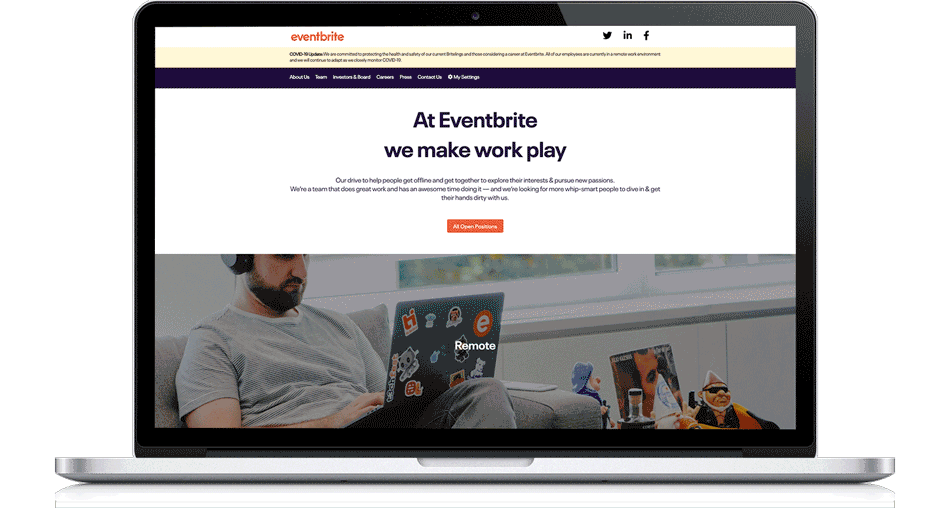
Knowing where to post jobs in the digital world can be a stressful, costly, often fruitless affair. But year on year, careers websitescareer websites have proven to be the preferred and most valuable channel for candidates researching a potential employer. They’re also the very first place a candidate visits after seeing or hearing about a job.
The good news: there are website content management tools that make it easy for talent teams to showcase their employer brand, without having to write a line of code. With endless customisation, easy-to-use templates, and dynamic content suggestions, these tools help HR teams deliver a personalisedpersonalized experience to everyone who visits their careers site, with pages that are designed to convert.
Useful and attractive pages showcase employer brand
It might be easy for the Googles and Microsofts of the world to appeal to winning talent. But what about companies that are still working on their brand recognition – or those expanding beyond their current market?
According to a 2019 NA Talent Board CandE Benchmark Research Report, employers with the highest positive candidate ratings were those that focused more on engagement pre-application.
High-quality candidates who mean business will often visit the company’s careers site to get a sense of the workplace culture or look for open roles. A massive 39% of candidates now say that company culture is the most important marketing content for their research on prospective employers.
To win the war for talent, companies need to showcase the job, the company values, the perks, and reasons why they are a great place for an employee to build their career. Well-informed, committed candidates will always go further through the recruitment process.
How can a careers site help?
A robust careers websitecareer website does an excellent job of humanisinghumanizing the research and pre-application process. Recruiters can test and measure their content to determine what’s working and what’s not. They can also start a conversation long before a candidate self-selects in or out of the application process. Careers websitesCareer websites ensure more high-quality candidates apply and have a positive experience.
These careers websitecareer website features can empower interested candidates to apply for an open position:
- Video job descriptions
- 24/7 chatbot assistance
- Dynamic website content
- ‘Why work here?’ blogs
What do the numbers say?
Our research has found that in 2020, careers websitescareer websites accounted for 20% of all global applications and 11% of hires. The effectiveness of the careers site as a sourcing channel is 45 – which means 45 applications are required to secure the one hire.
But in 2019, they were more effective: globally, for every 37 applications submitted, one person was hired. In terms of volume, 22% of applications and 14% of hires were via the careers website.
This speaks to the volume of applicants currently on the market, which has increased the number of ‘wrong fit’ applicants coming through these channels. This year, jobseeker behaviourbehavior has changed: with more talent on the market, people have fewer chances to be choosy – and many are applying to whatever opportunities seem like a close fit. Many will be applying for multiple jobs.
Despite this, those applying through a careers site are still much more likely to convert to new hires than job boards and social media channels. These candidates are already interested; they’ve had a chance to interact with the content and get a feel for the culture and vision. They can self-select in or out based on the information provided by the careers site.
What do employers say?
In speaking with our customers, those with highly effective careers websitescareer websites have proactively worked to showcase their values, mission, and culture and create transparency on their response to COVID-19.
Take one of our customers, Klook, for example. As a travel technology business, most wouldn’t expect them to be as visible in the job market right now: but that doesn’t mean they shouldn’t be. Senior Manager, Global Employer Branding and People Communications, Marilyn Yee, shifted the business’ focus towards building engagement, awareness, and communicating what Klook was doing as a company during the pandemic.
Read: Employer branding with Marilyn Yee (Klook)
SEO allows jobseekers to discover an employer easily
If recruiters want their job postings found, they need to use the keywords and search queries jobseekers are actually using. That means exercising restraint in ‘industry speak’ and funky job titles like ‘Chief Inspiration Officer’ or ‘Recruitment Ninja’. If someone were looking to hire a Digital Marketing Manager, they wouldn’t advertise for a ‘Customer Conversation Artichect.’ Always use plain, conversational language (not buzzwords) when writing about a company and its people.
To get job openings on the radar of top talent, organisationsorganizations should follow these simple Search Engine OptimisationOptimization rules:
- Always use SEO friendly job titles and descriptions
- Build well-optimisedwell-optimized sitemap structures
- Create content that keeps visitors on-page and clicking through
- Showcase company blogs on relevant candidate topics
- Write copy that answers common questions about roles
- Share postings on social media to drive traffic to the website
Pro tip: do some research before posting a job. Which pages come up first in your Google search – and what have these pages done to get there?
Some recruiters take a partnership approach by asking copywriting specialists within their marketing department to look over ads and give feedback. An easier way to do it is to use smart careers websitescareer websites that automatically index pages, flag areas for improvement, and share content via top-performing social media channels.
They promote and support diversity, equity, and inclusion
86% of female millennials look for an employer’s policy on diversity and workforce inclusion when deciding whether to work for someone. But many organisationsorganizations struggle to communicate an inclusive EVP (employee value proposition) on their website to support their diversity hiring strategy and build rich talent pools.
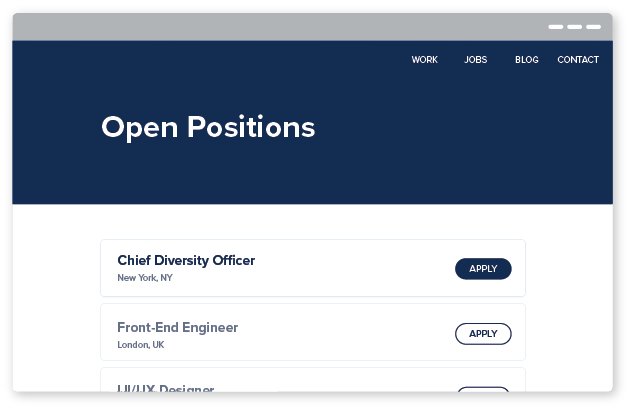
Careers sites aren’t just a home for open roles; they’re a reflection of a company’s values and culture. When executed well, careers websitescareer websites can be a key driver of diverse talent attraction. Rather than forcing a candidate to search far and wide for a DE&I policy or programs, microsites and landing pages tell an authentic story about the company’s culture and values from the moment a candidate arrives.
Best-of-breed careers websitecareer website technology goes the extra mile with advanced analytics that allows hiring teams to measure progress, report on visitor demographics, and make improvements along the way.
Pro tip: language is a powerful tool. Be sure to write thoughtful, inclusive job descriptions that encourage people from all walks of life to apply, regardless of race, gender, age, sexual orientation, education, abilities, beliefs, and communication styles. Tools like Textio can help recruiters keep bias out of their job ads.
Dynamic website content offers a personalisedpersonalized experience
You wouldn’t show offices in San Francisco to someone in Hong Kong – just as you wouldn’t advertise a talent acquisition role to a developer.
But many company careers pages tend to focus on a single audience because few have time to update their content for every visitor or reader. Yet, recruiters still need a wide range of content to create personalisedpersonalized journeys tailored to individuals’ interests, needs, and characteristics.
High-quality careers websitescareer websites deliver unique experiences based on who is looking at the pages. Using website cookies and AI-powered suggestions, candidates are served hyper-targeted EVP images and text based on their location, language preference, demographics, or interests. Dynamic content journeys feel more personal and can be the difference between a successful application or a drop-off.
Strong CTAs hook ‘hot prospects’
Think of a modern-day marketer creating a customer lead magnet: An irresistible website lure that offers prospects something valuable in exchange for contact details. Likewise, careers websitecareer website calls-to-action encourage passive, high-quality prospects to join a pool of candidates. More than just a simple ‘apply now’ button, a careers websitecareer website call-to-action can include:
- Expression of interest forms
- Company newsletter sign-ups
- Event registration forms
- Alumni talent network registration forms
- Internal opportunity registration forms
A compelling CTA captures passive candidate details and keeps them warm in talent pools. These ‘candidate magnets’ allow passive talent to connect with companies they’re interested in working for. And when the time is right, they’ll have been nurtured and ready to receive their exclusive invitation to apply for a job.
Why is this important? Our research has found candidate relationship management (CRM and talent pooling) is one of the most effective sourcing channels. In 2020, 2% of applications and 22% of hires were via proactive talent relationship initiatives. In fact, on average, less than three (2.4) applications from talent pools were needed to secure a hire.
Mobile optimisationoptimization reduces candidate drop off
86% of all active job searches begin on a mobile device. In 2020, PageUp Head of Customer Insights and Market Research, Rebecca Skilbeck, discovered almost a third of retail industry applications were being filled from a mobile device.
“Recruiters should aim to make mobile application forms shorter while including better screening questions so candidates can be moved through, or out, of the process quickly,” Skilbeck said.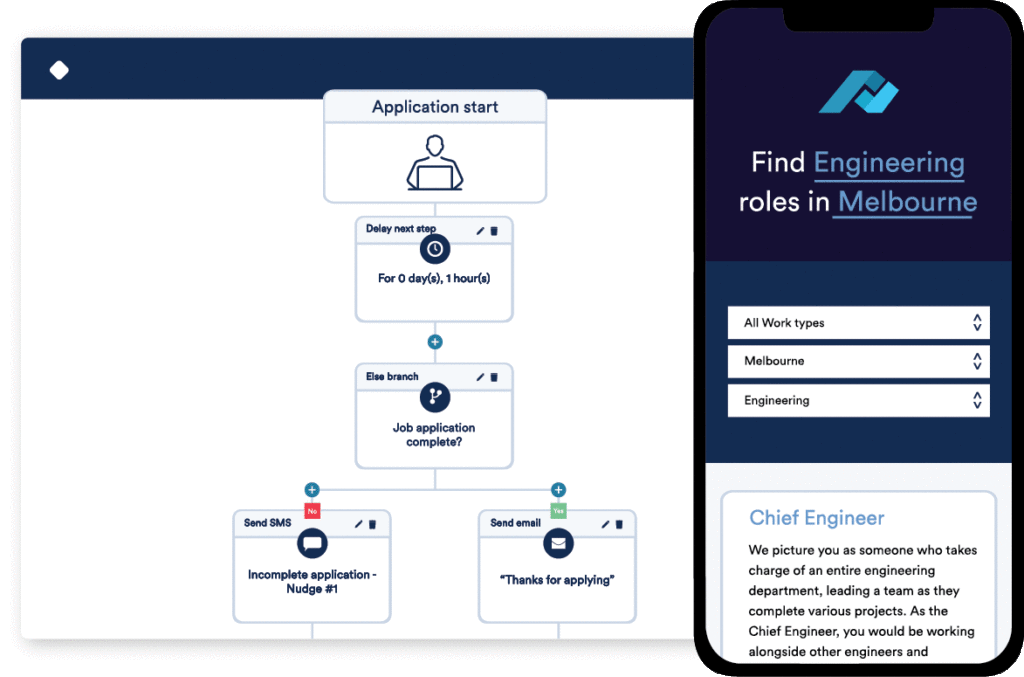
With more people at home searching and applying for jobs on mobile devices, it’s either time to adapt or lose tech-savvy candidates to competitors. Unresponsive page design hurts SEO, and complicated or outdated application processes can put candidates off. On a positive note, PageUp’s mobile-friendly careers sites receive 6x the amount of applications with responsive pages and user-friendly forms to convert quality talent.
Pro tip: recruiters should try navigating their own pages or filling out forms on mobile to see where processes can be streamlined.
Careers websitesCareer websites that recruit for you
Do you know if your careers websitecareer website content is actually working? Our clients see a 37% conversion rate from first visit to completed application.
Represent your brand with pride and attract and convert quality talent with PageUp Recruitment Marketing. Our powerful, easy to manage, responsive, and optimisedoptimized careers websitecareer website builder takes the work out of hiring.
But don’t just take our word for it – get a free recruitment marketing demo to see a PageUp careers websitecareer website in action or learn more about the module here. We’re always here to help you select from the best talent in the market (not just the best who applied for your job).
Fresh insights for HR
Stay up to date with HR trends, tips and more when you sign up for our industry newsletter

